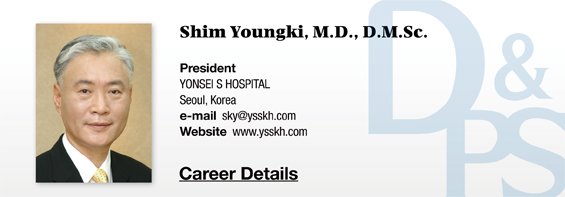Prevention of varicose veins
It goes without saying that prevention is the best form of treatment. Many prevention methods help inhibit progress of existing varicose veins and development of new varices.
I recommend the following prevention methods.
① Abandon the sedentary life. Avoid doing things that require sitting for a long time.
② Maintain appropriate body weight.
③ Avoid clothing that is too tight.
④ Do not stay in a prolonged standing position.
⑤ Raise the legs frequently and exercise flexion-extension & rotation of the feet to allow veinous drainage.
⑥ Avoid prolonged exposure to excessive heat.
⑦ Wear medical high-elasticity compression stockings.
⑧ Reduce sodium intake.
⑨ Try to avoid constipation.
[Advertisement] A-One LITE(Facial Diagnosys System) – Manufacturer: BOMTECH(www.bomtech.net)
Varicose Veins Handbook
Below, I have summarized important information about varicose veins in a Q&A format. This may be used as a reference during patient consultation.
1. What is varicose veins?
Varicose veins are tortuous blue or purplish red veins appearing in the legs and are caused by circulatory disturbance that lead it enlargement and protrusion of veins.
2. What causes varicose veins?
The reason behind enlargement of blood vessels are not yet clearly understood, however, congenital and genetic factors should be considered. Factors such as hormonal imbalance, obesity, pregnancy, liver cirrhosis, and heart diseases, etc. may also affect development of varicose veins.
3. What are treatment methods for varicose veins?
Treatments for varicose veins can be largely divided into three methods; 1) conservative therapy combining exercise, rest and compression stockings, 2) sclerotherapy and 3) surgical treatment. The second is a non-surgical treatment of varicose veins.
4. What is sclerotherapy?
Sclerotherapy uses intravascular injection of a drug that removes diseased blood vessels. Applying appropriate compression on the treated area for several days induces thrombus, thereby removing the diseased blood vessels. This painless method effectively eliminates varicose veins and restores the smooth appearance of the legs.
5. What are benefits of sclerotherapy?
As it is non-invasive, sclerotherapy does not cause any scarring. It is also painless and safe with only mild side effects from the sclerosant. Moreover, sclerotherapy can be carried out in the outpatient setting and does not require hospitalization.
6. Doesn’t blocking blood vessels with a sclerosant cause skin necrosis?
Sclerotherapy targets enlarged veins, not arteries. If all blood vessels are obstructed, it could be a problem but the diseased veins account for only 10% of the blood flow. Therefore, disruption to circulation is minimal and such side effects are not likely to occur.
7. What happens if varicose veins are left untreated?
Leaving varicose veins untreated for a long time can cause blood stasis within varices, darkening of the skin and even skin ulcers in severe cases.
8. How many treatments of sclerotherapy are necessary?
To eliminate all varicose veins, about 3-5 treatments given every 1-2 weeks are needed. After one series of treatment, 90% of varicose veins completely disappear. If varicose veins reappear, another series of treatments should be performed 2-5 years later.
9. Can sclerotherapy prevent development of varicose veins in other areas?
Sclerotherapy cannot prevent development of new varicose veins in other areas.
10. The area treated with sclerotherpy feels hard to the touch. Is this a common phenomenon?
In severe cases of varicose veins, hardness and tension could be felt in the treated area following sclerotherapy. These are naturally resolved in 3-6 months, however, if they persist and lead to inflammatory response, treatment is needed.
11. How can we prevent varicose veins?
Avoid sitting down for a long time and maintain an appropriate body weight. Avoid wearing very tight clothes. Do not stay in a standing position for a long time. Elevate the legs often to facilitate venous blood flow. Also, bend, flex or rotate the knee and ankle often. Avoid prolonged exposure to excessive heat and wear compression stockings. Reduce sodium intake and try to avoid constipation.
12. What are contraindications to sclerotherapy?
Patients with following conditions may be considered ineligible for sclerotherapy; pregnancy, immobility, history of thrombophlebitis or deep vein thrombosis, allergic reaction to sclerosant, severe leg edema, diabetic complications, and severe heart disease.
13. What should the patient prepare before visiting the doctor?
The doctor should be knowledgeable about the patient’s medical and medication history. If the patient has used high-elasticity compression stockings, instruct the patient to bring or wear them to the visit. As diagnosis and treatment are often carried out on the same day, instruct the patient to wear loose pants and comfortable shoes.
-To be continued-





















